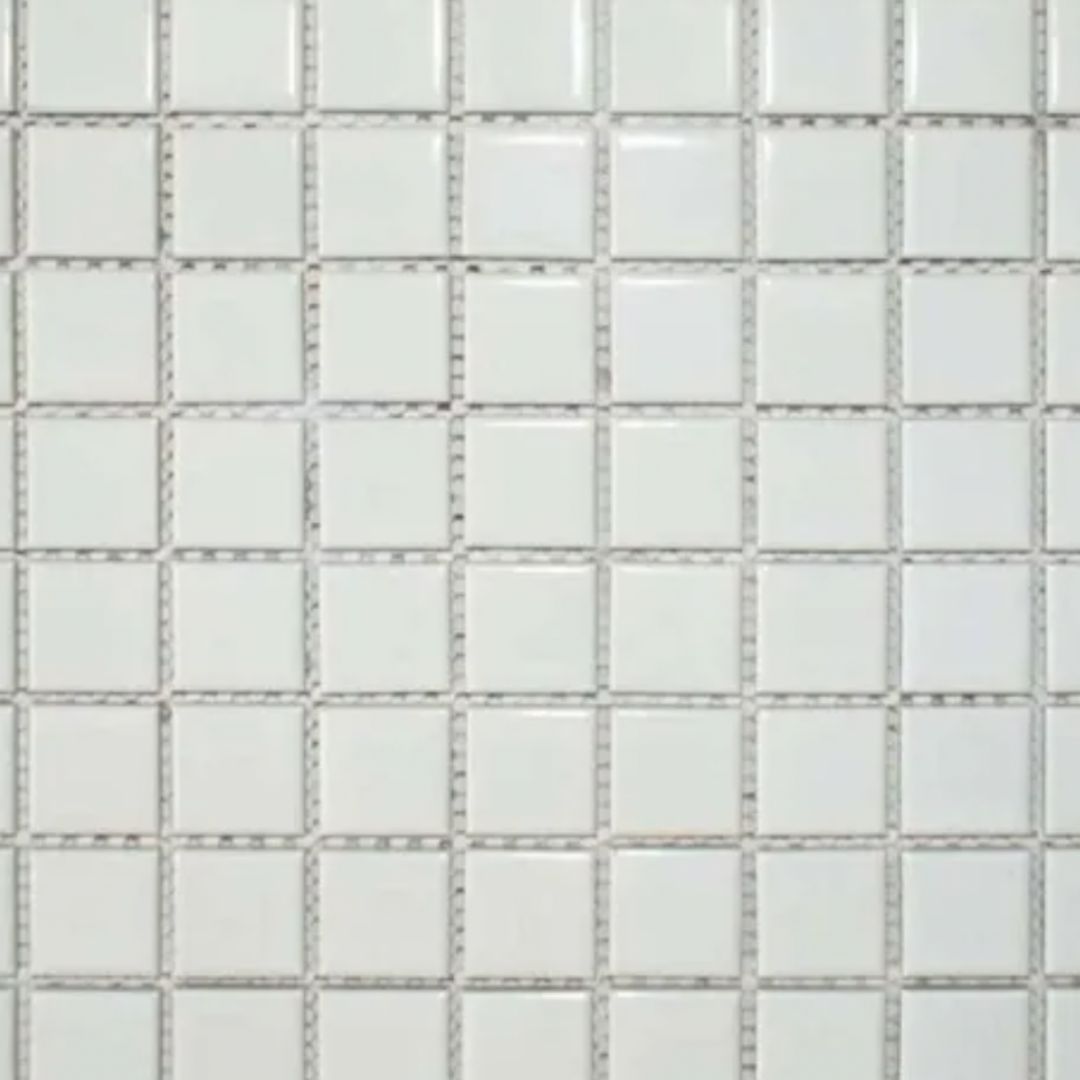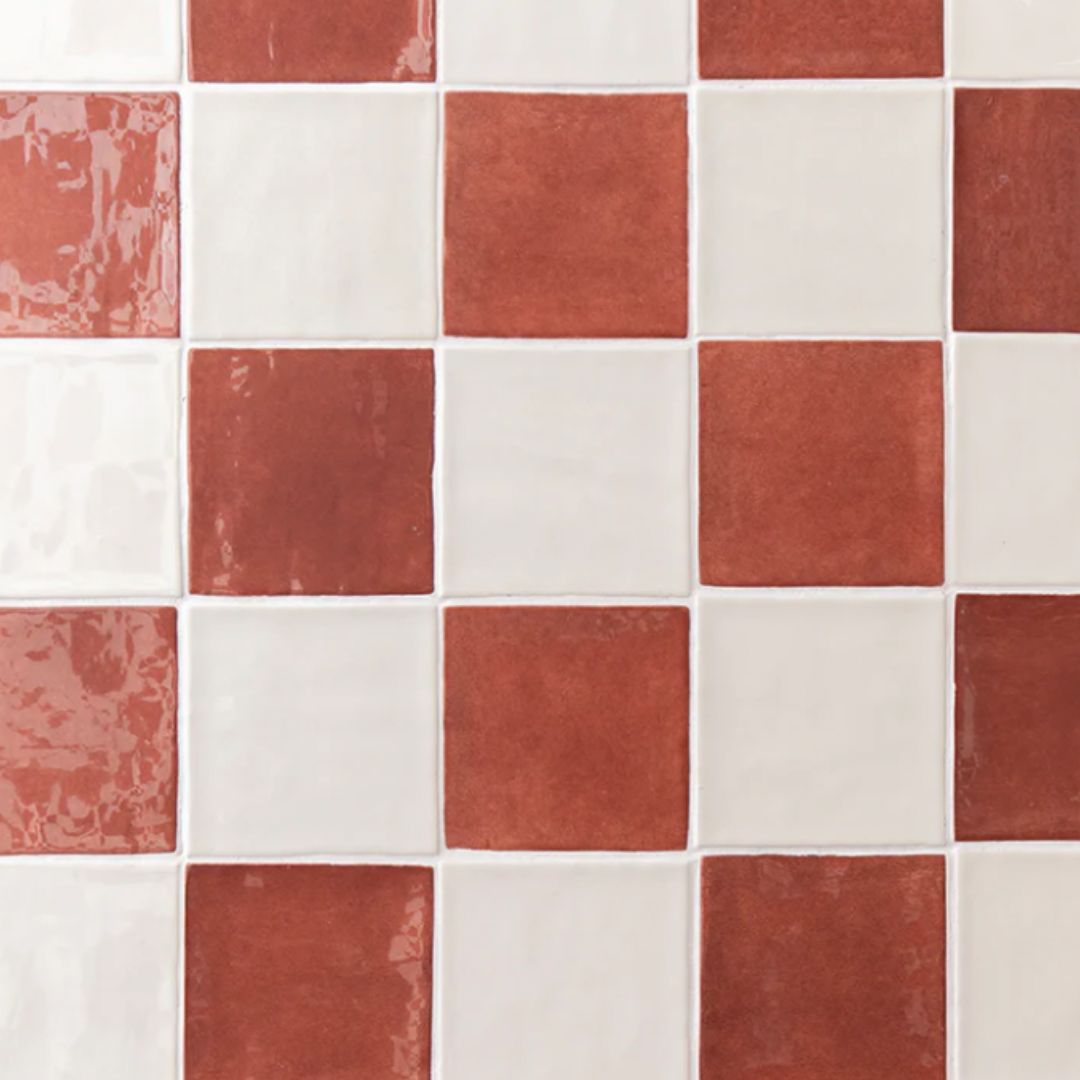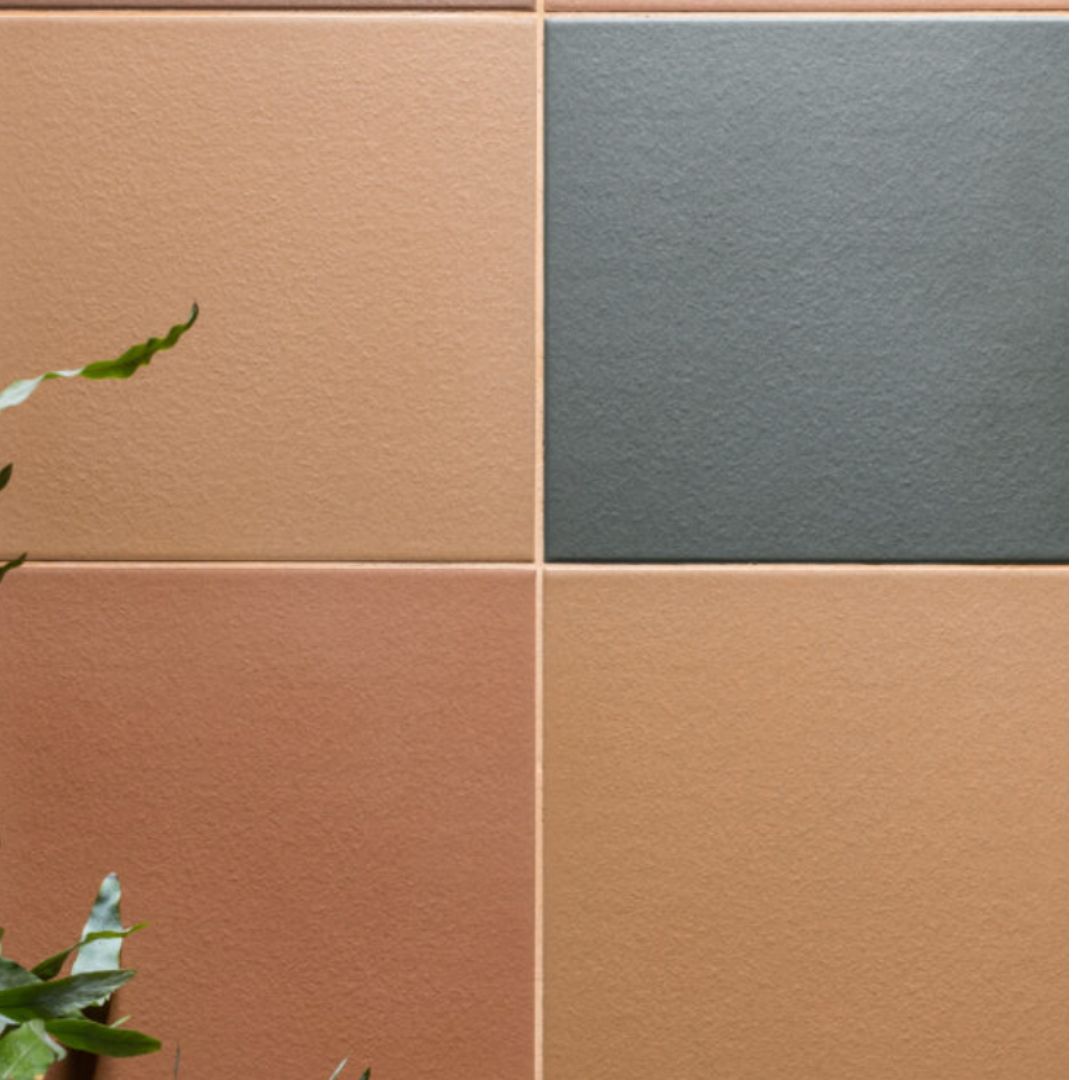8 Types of Tile Shapes to Consider For Your Next Bathroom Reno — Number 4 Is Our Favorite Pick for 2025
These tile shapes bring a fresh design edge to your next renovation, perfect for backsplashes, floors, or feature walls


Everyone pays attention to the material, finish, and color of a tile, but have you ever considered how important its shape can be in designing a room? You’d be surprised at how much a square, rectangle, chevron, or even diamond-shaped tile can do to add depth, style, and a decorative touch to your interiors.
Beyond their practicality, tile shapes can bring creativity and personality to a space. Experts also suggest paying close attention to layout and grout choices, as both can enhance and highlight a tile’s unique shape.
So if you're ready to refresh your bathroom tile ideas and give them a lift, take a look at these suggestions, and bookmark the ones that inspire you most.
1. Square
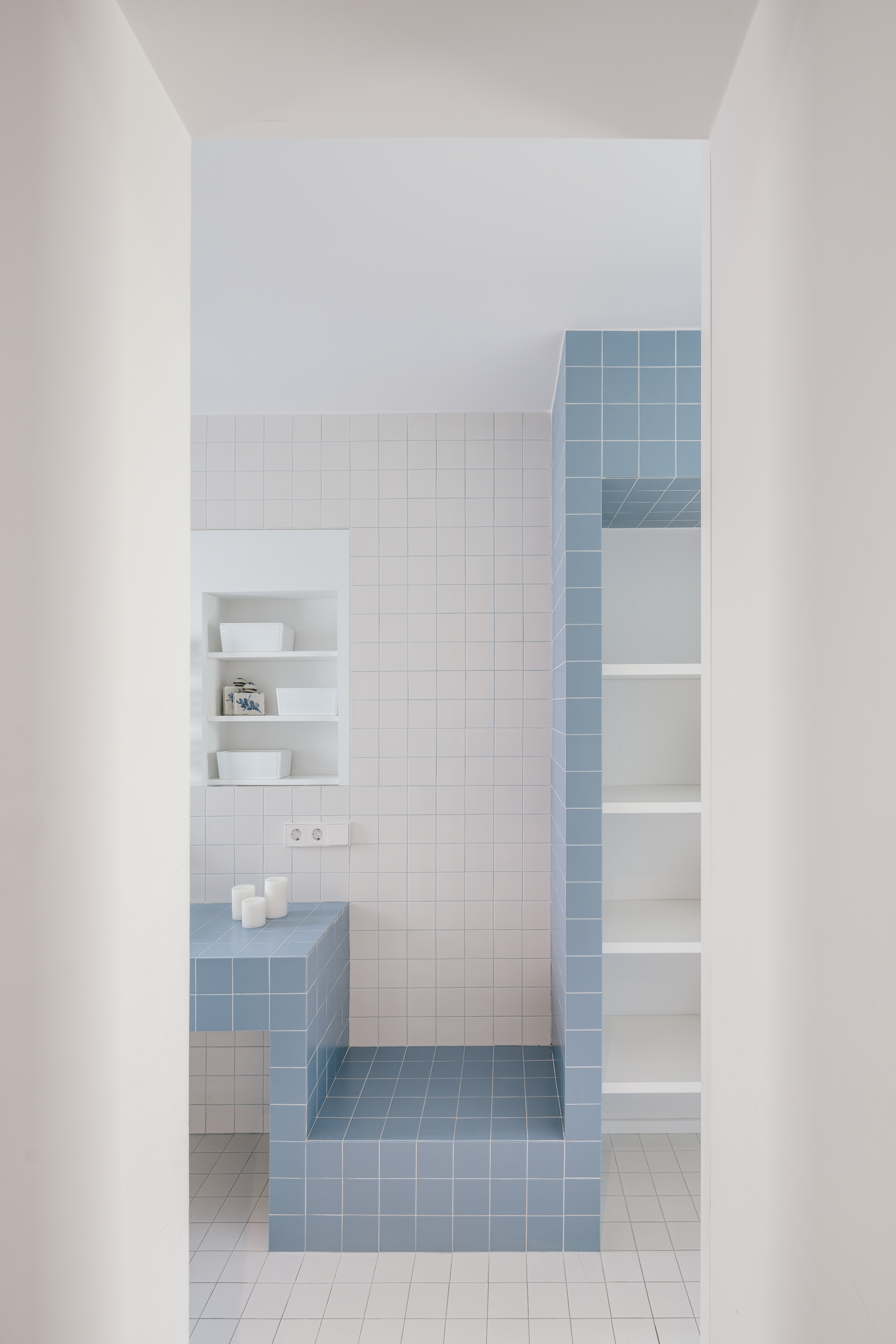
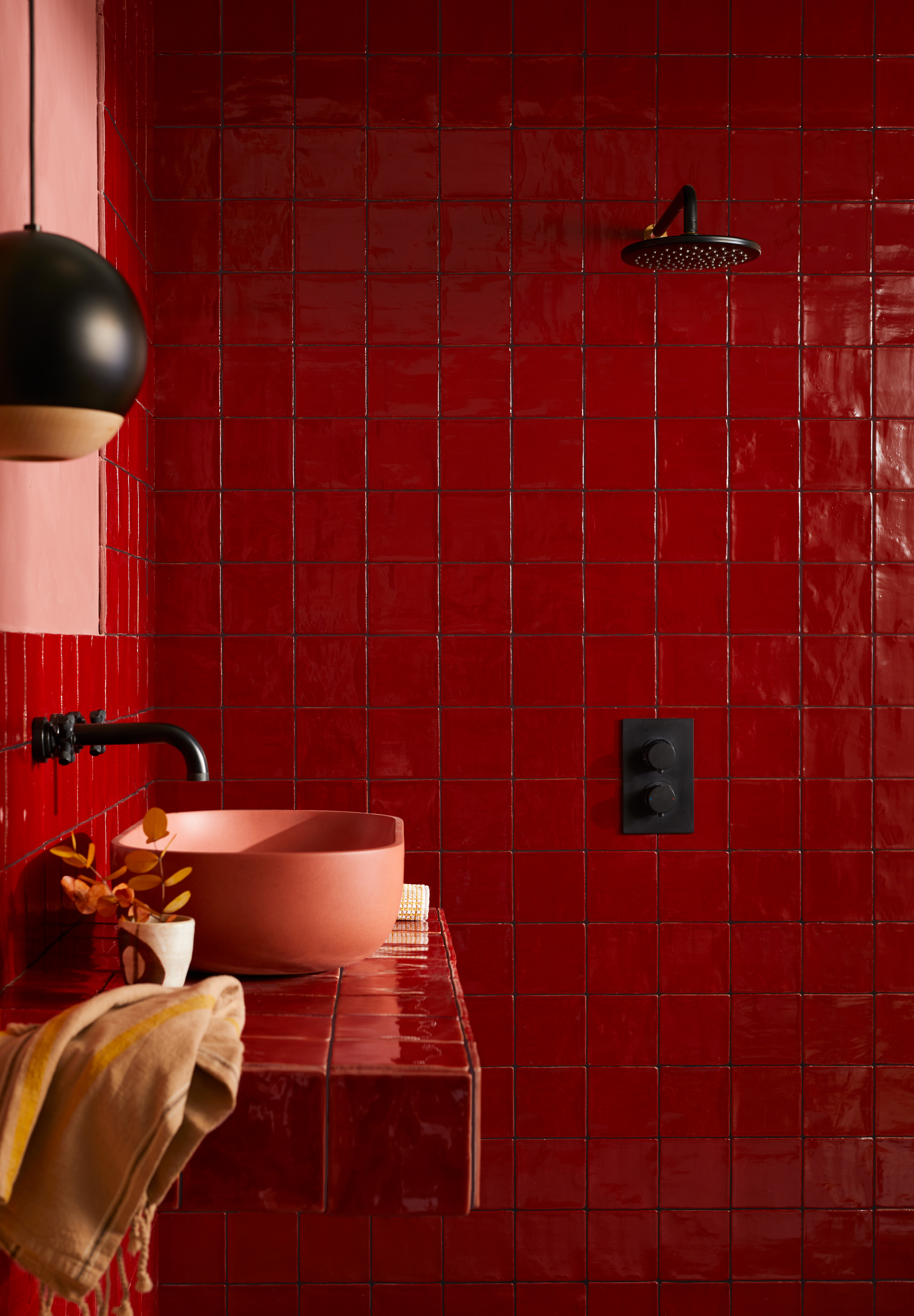
Perhaps one of the most versatile formats, square tiles are perfect for both walls and floors, bringing visual interest to the modern bathroom. Whether used as an accent wall or to tile-drench the entire space, square tiles can create a casual aesthetic or a more decorative one, depending on your vision. Opt for a flat-finish square tile in a running bond arrangement, or choose matte-finish tiles for bathroom floor tiles — especially in showers — for their slip-resistant properties.
“Square tiles are a classic and timeless choice for bathrooms,” says Lee Thornley, founder of Bert & May. “They can be used to create clean lines or distinctive features like a chequerboard backsplash. Square tiles also work beautifully with patterned designs, such as our Moclin Column, Arch, and Cap tiles, which can be combined to form a mural-like statement.”
In a blue and white bathroom, Miguel Crespo Picot, Javier Guzmán Benito, and Sixto Martín Martínez, founders of Zooco, used small-format square tiles to cover the entire space. “These were chosen for their color, modulation, and clean lines,” they explain. “We were particularly interested in working with the negative of white, using blue grout to highlight the tile geometry and give the space a distinct character.”
Interestingly, handmade encaustic tiles are well-suited for a square format, allowing them to be used to create classic designs such as stripes or checkerboard patterns.
The Livingetc newsletters are your inside source for what’s shaping interiors now - and what’s next. Discover trend forecasts, smart style ideas, and curated shopping inspiration that brings design to life. Subscribe today and stay ahead of the curve.
Zooco is an architecture studio founded in 2009 by Miguel Crespo Picot, Javier Guzmán Benito, and Sixto Martín Martínez. With offices in Madrid and Santander, they create timeless, client-focused designs across scales—from buildings to furniture—both nationally and internationally.
Bert & May began in Spain in 2004 when founder Lee Thornley discovered a passion for reclaimed materials. After opening a boutique hotel, he partnered with a family tilemaker to revive traditional techniques, launching Bert & May in 2013 as a specialist brand creating handmade, vintage-inspired artisan tiles.
2. Rectangle
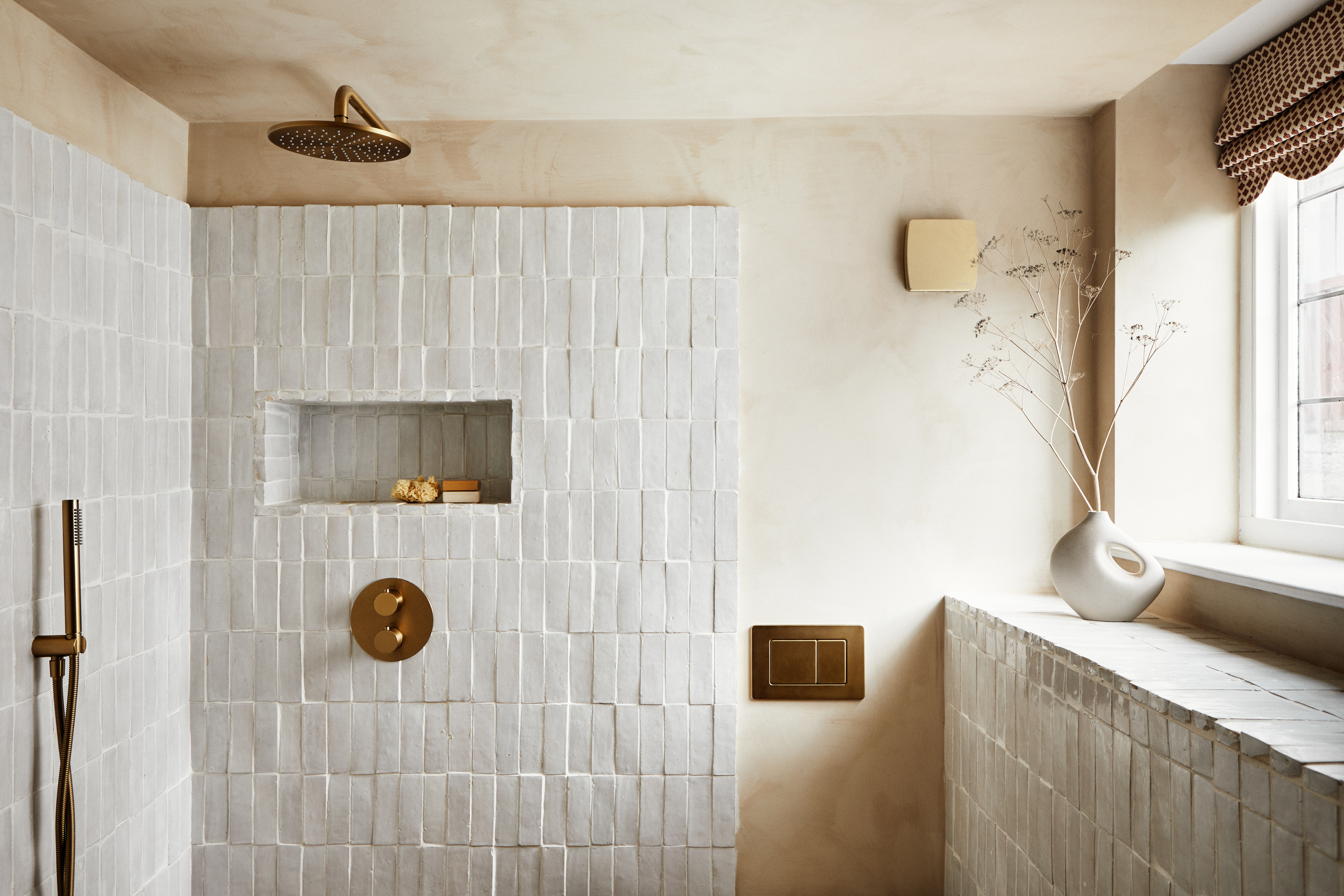
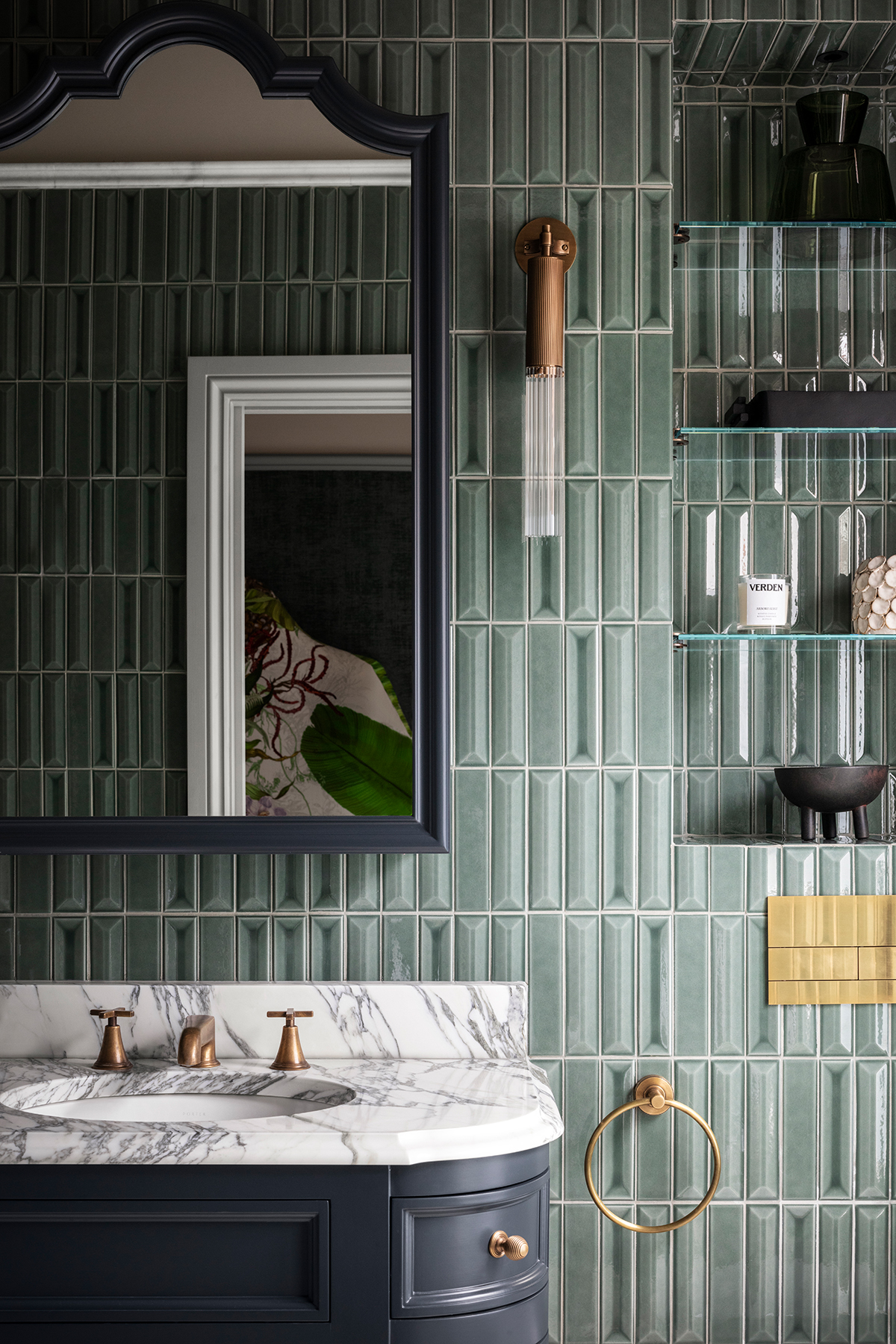
Rectangular, or metro or plank tiles make excellent choices for flooring or bathroom wall tiles, especially in high-traffic areas. This format is particularly effective in small bathrooms where you want to visually expand the space and make it feel wider.
“Typically, rectangular tiles work well across walls as they elongate a space and add height,” says Lee. “You can arrange them to create bold stripes or patterns like chevrons that add visual interest to your scheme. Or, experiment with proportion, our Skinny Metro tiles, for example, offer a contemporary twist on a traditional look.”
He adds, “Square tiles are also great for both floors and walls. A design technique known as tile drenching uses the same tile color and shape throughout a space, creating a seamless, immersive look. Choose a rich tone like our Garnet Glazed Square tile for a bold and inviting statement.”
Lee also suggests using Zellige rectangular tiles to introduce texture: “Layouts like brickwork or herringbone give the appearance of a rippling surface, which is especially effective in a bathroom.”
3. Large-Format Rectangle Tiles
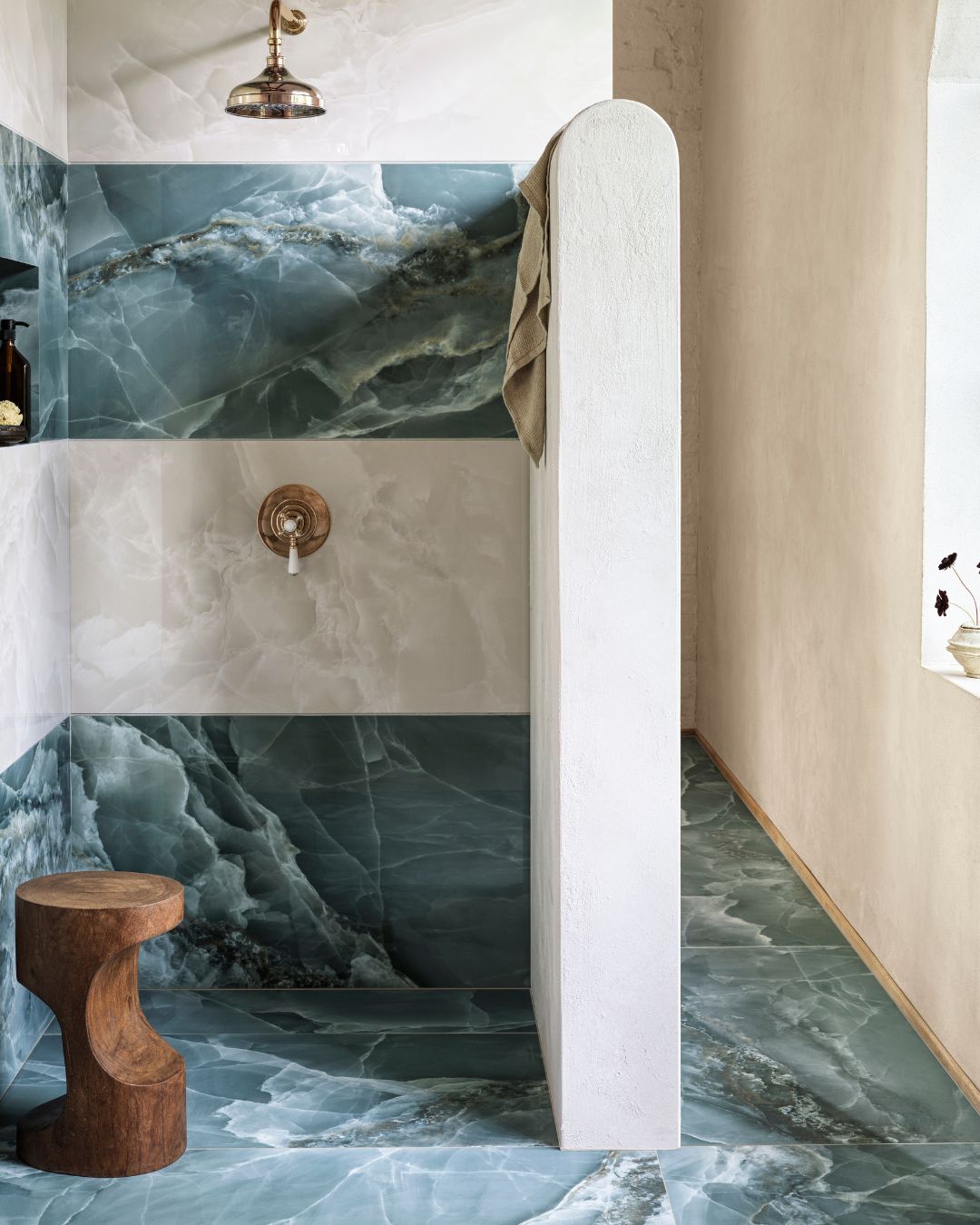
Large rectangular tiles offer numerous benefits, including a more spacious, modern aesthetic and a sophisticated, luxe vibe—making them ideal for the master bathroom. They’re also easier to clean and maintain, and thanks to fewer grout lines, they can create the illusion of a larger room.
Interestingly, while large-format tiles may appear expensive upfront, they can be cost-effective in the long run due to reduced installation time.
“Matte and textured tiles like our Onyx Matt offer good traction, making them a sensible choice for large-format bathroom flooring," says Carly Allison, head of brand and product at Fired Earth. "Made of cement and porcelain, they are highly water resistant and durable, which are favourable traits for tiles with a large surface area. Inspired by Italian marbles, the tiles have the marble-like veining that adds depth and detail to the walk-in shower space for an opulent feel.”
Typically, large-format rectangular tiles work best in marble or porcelain, as these materials enhance their sleek appearance and durability.
Fired Earth has curated timeless, durable designs since 1983. With over 30 UK showrooms, it offers expert guidance and globally sourced products to help customers create homes they’ll always love.
4. Circle
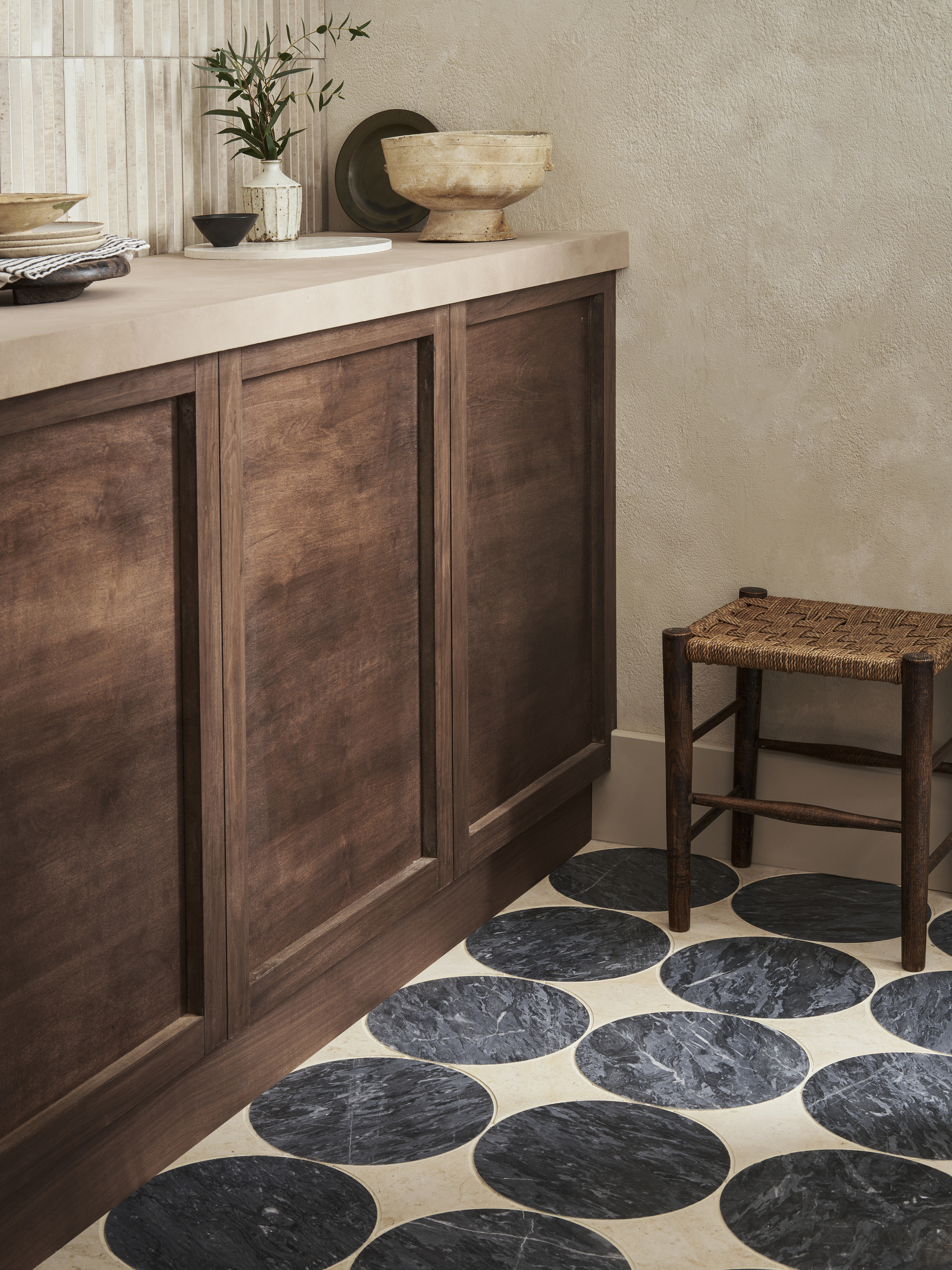
Much like large rectangular tiles, large circular tiles also offer a seamless, modern look with fewer grout lines, helping to visually expand a space. They’re known for their durability, easy maintenance, and versatile design options—and they come in a wide range of colors.
“Circles are a unique shape to see in tiles," says Carly. "They are great for softening the hard appearance of a tiled floor by adding a smooth edge. From our Blends collection, the marble-like Nero Circle can be partnered with a contrasting colored Grigio Star shapes to create a show-stopping pattern which spotlights their rounded shape and makes an impact as a feature floor.”
Marble, porcelain, and ceramic are typically the best materials for round tile formats. However, when it comes to bathroom tile costs,it is worth noting that large-format circular tiles often require specialized installation techniques. This can make them slightly more expensive to install, particularly on uneven surfaces or in more complex layouts.
5. Hexagon
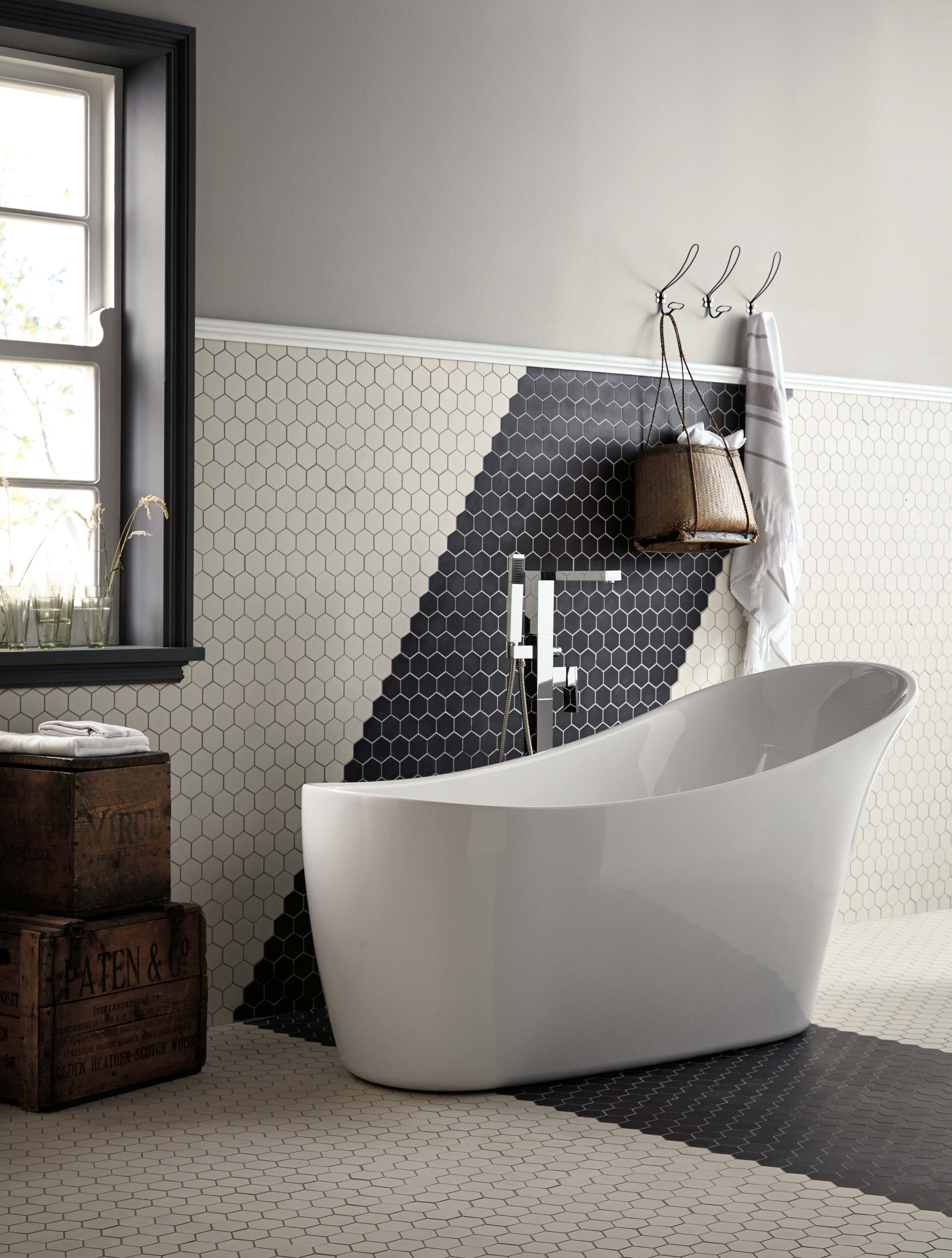
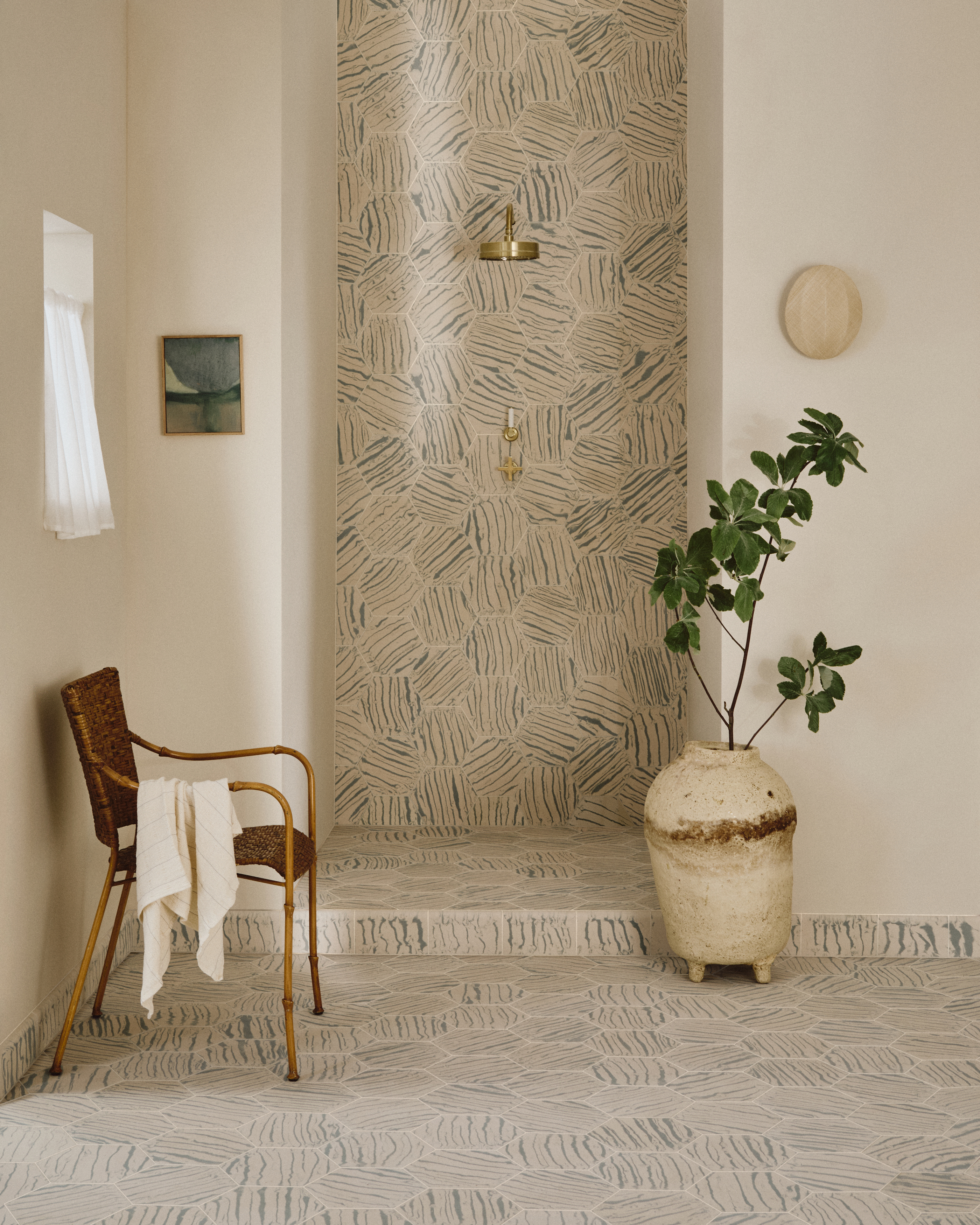
Hexagon format works perfectly as both large and small bathroom tiles, offering a unique blend of aesthetic appeal and practical benefits. Their six-sided shape is distinctive, geometric, and eye-catching, adding instant visual interest to any space.
Experts often recommend using hex tiles for accent walls, half-height features, or flooring, as their intricate patterns can sometimes overwhelm when used excessively. Available in materials like ceramic, porcelain, and encaustic, they offer flexibility across a variety of design styles.
“Small hexagonal tiles bring intricate detail and geometry to a space," says Carly. "In wet rooms, they are effective at adding grip underfoot and elevating the style of a sleek, pared-back bathroom design.”
6. Scallop
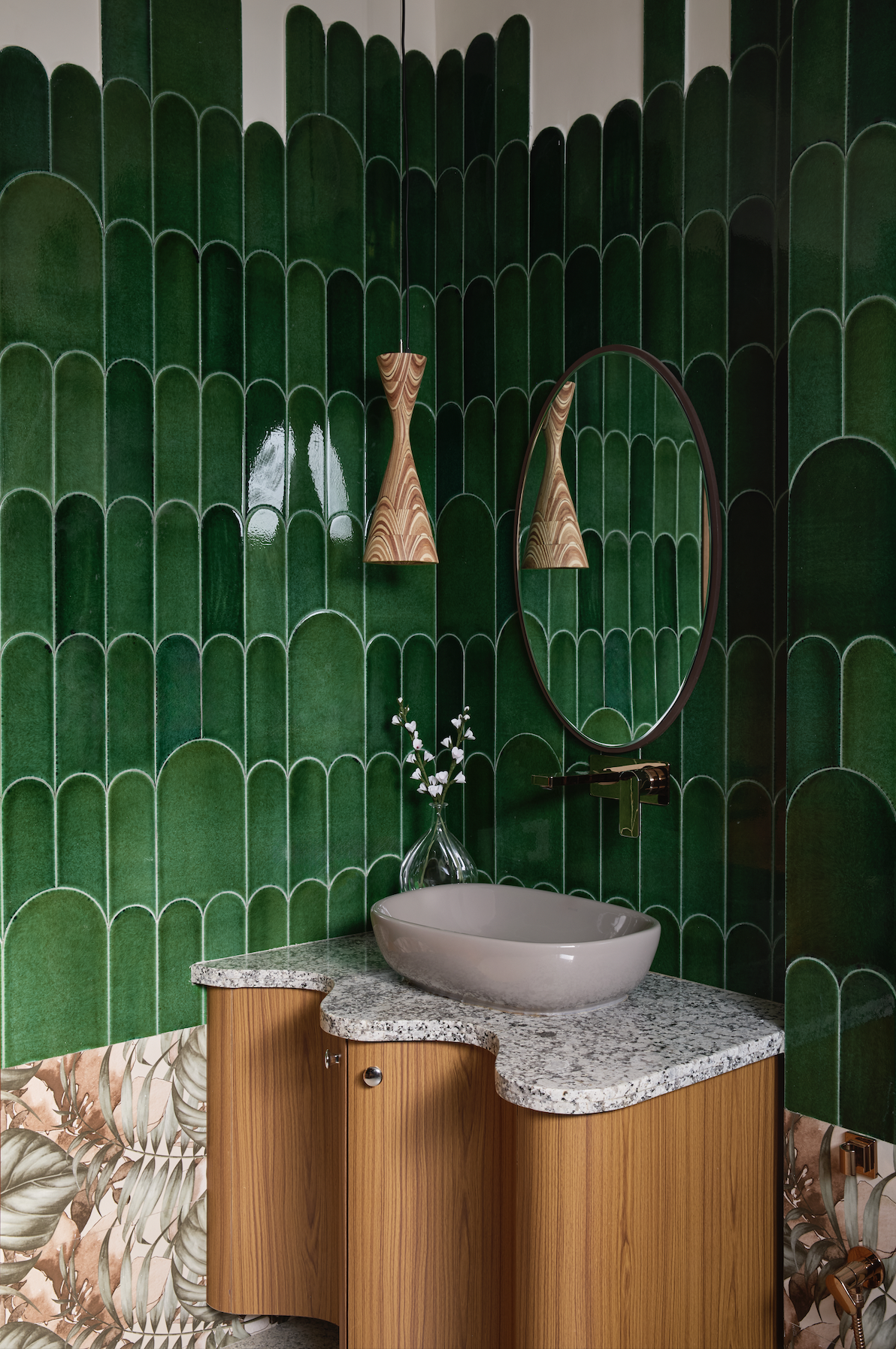
Scallop or fish scale tiles are one of the hottest bathroom tile trends today, even though they’ve been around for centuries. Named for their curved, overlapping shape that mimics fish scales or seashells, these tiles add texture, dimension, and a touch of elegance to any bathroom.
Contemporary versions come in a wide variety of colors, materials, sizes, and finishes, making them incredibly versatile. Whether you're aiming for a coastal aesthetic or a spa-like retreat, scallop tiles can help you achieve the look.
They work especially well on walk-in shower walls, backsplashes, and accent strips, and are typically available in ceramic, porcelain, or glass.
7. Diamond
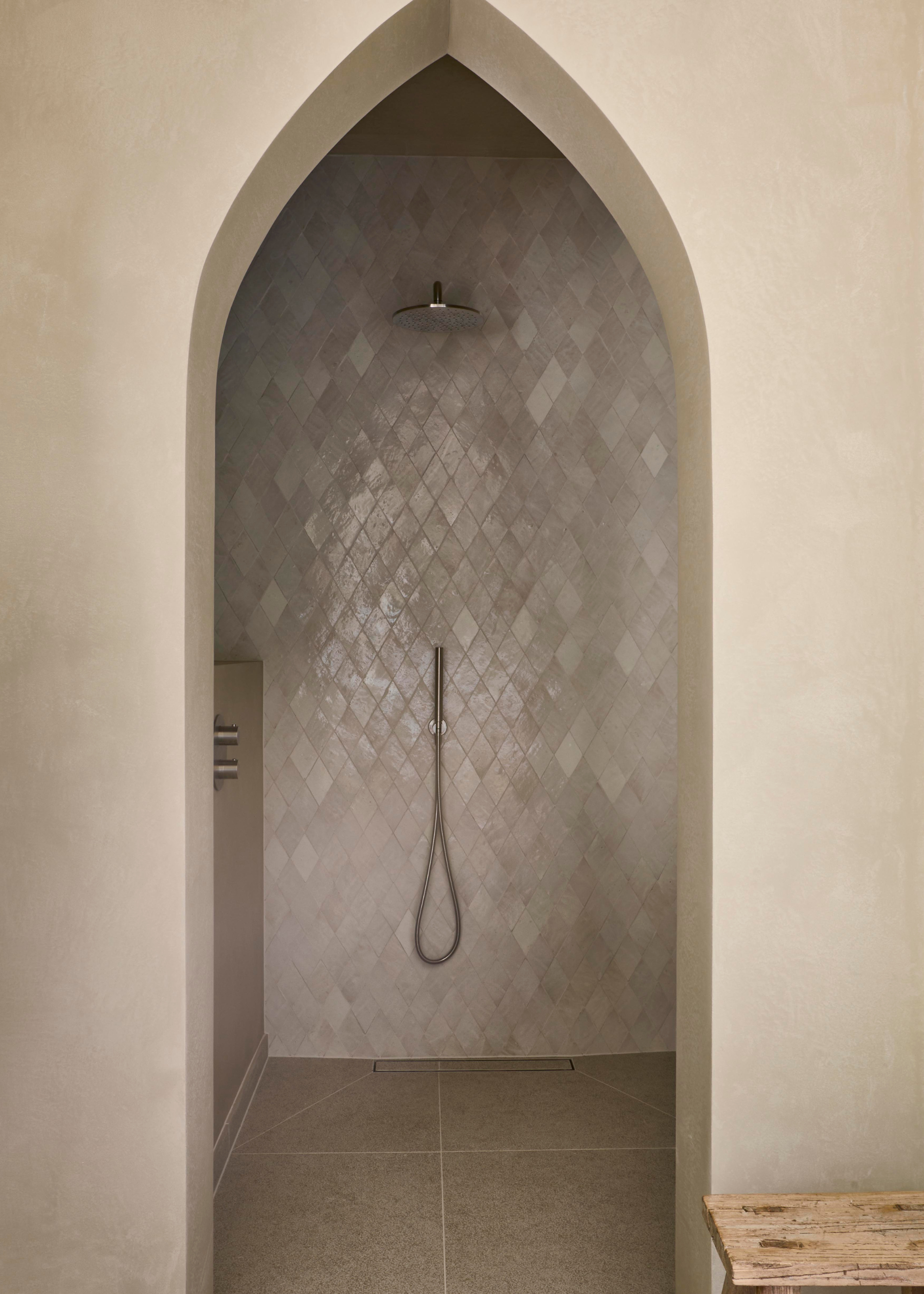
Let’s bust the myth: diamond tiles aren’t just square tiles turned on an angle. While that’s partly true, the angled layout creates a distinct and dramatic visual effect. In a diamond pattern, tiles are laid at a 90-degree angle to each other, forming a true diamond shape.
This format is a growing bathroom flooring trend, offering a striking, geometric look. Typically uniform in design, diamond tiles work particularly well in small spaces, often outperforming square tiles in making a room feel more dynamic. They also help bring a sense of order to irregular layouts, although it’s best to consult a professional before tackling complex spaces.
Diamond tiles are available in ceramic, porcelain, marble, and glass, making them a versatile choice for bold, design-forward interiors.
8. Penny
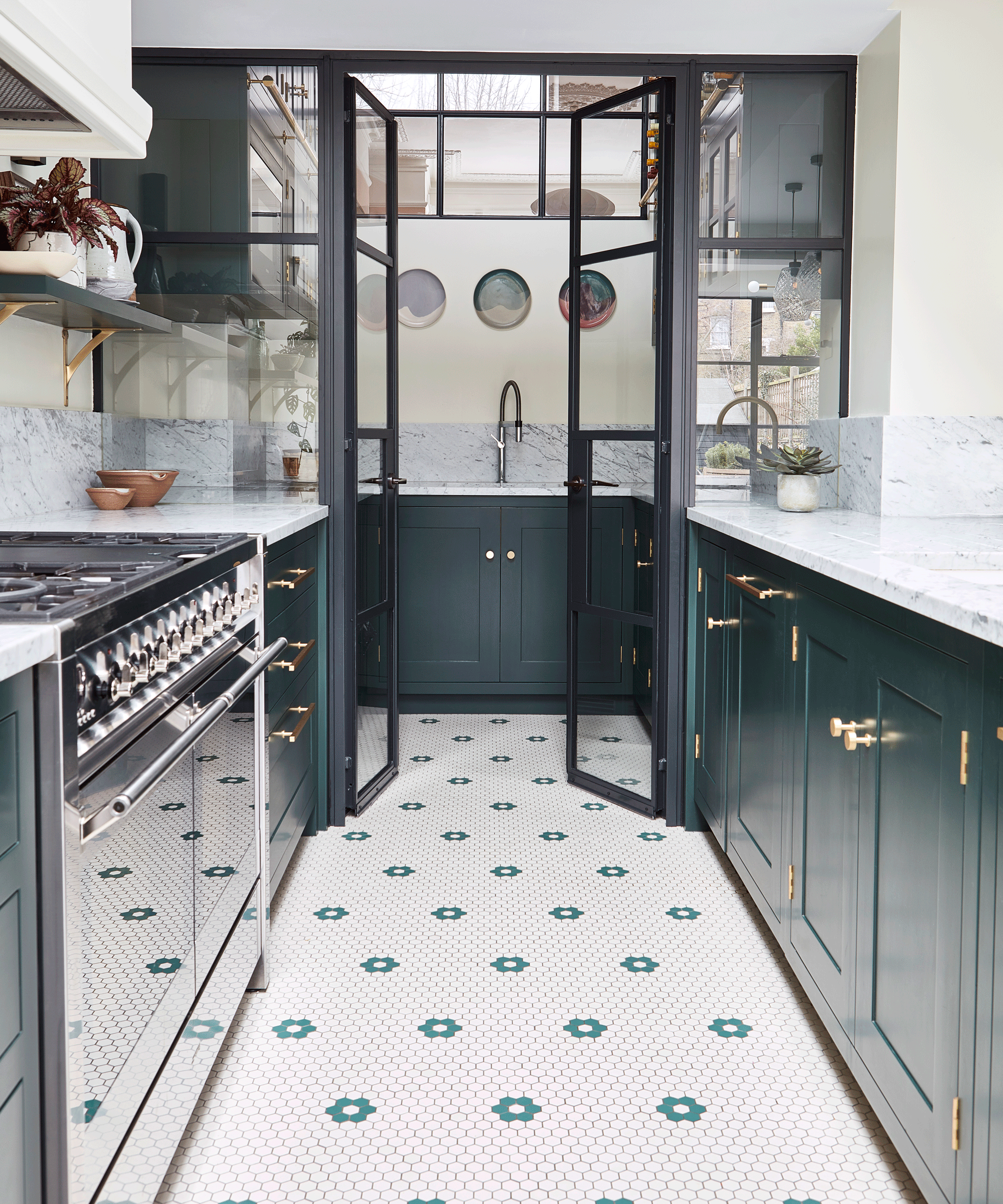
Tiny, decorative, and instantly appealing, penny tiles offer a perfect blend of style and practicality. They suit a wide range of bathroom styles—whether it’s a luxury bathroom, a spa-inspired space, or a minimalist setting, depending on the color and finish you choose.
Easy to source and install, penny tiles come in a variety of colors and patterns. While they’re a popular choice for flooring, you can also extend them up the walls to create a bold, cohesive statement.
When it comes to grout, penny tiles often look best with black borders or light grout against darker tiles to enhance their shape and pattern. They’re typically made from ceramic or porcelain.
"Penny tiles are perfect for spaces where you may wish to add text to the floor — a simple hello in an "entryway" or a jovial "splash" written in a bright color on the floor of a kid's bathroom can be hugely impactful," adds Magnus Nilsson, lead designer at Blakes London.
FAQs
What Is the Best Shape for Tiles?
There’s no one-size-fits-all when it comes to tile shapes; the best option depends on your space, style, and how you plan to lay them. While square and rectangular tiles are timeless and versatile, geometric options like hexagons or diamonds can bring bold character and texture. When choosing a shape, consider your room’s dimensions, your overall design vision, and the desired visual impact you want to create.
Tile shapes do more than cover surfaces; they define the character of a space. From classic squares and rectangles to bold scallops and diamonds, choosing the right shape can elevate your bathroom.

Aditi Sharma Maheshwari started her career at The Address (The Times of India), a tabloid on interiors and art. She wrote profiles of Indian artists, designers, and architects, and covered inspiring houses and commercial properties. After four years, she moved to ELLE DECOR as a senior features writer, where she contributed to the magazine and website, and also worked alongside the events team on India Design ID — the brand’s 10-day, annual design show. She wrote across topics: from designer interviews, and house tours, to new product launches, shopping pages, and reviews. After three years, she was hired as the senior editor at Houzz. The website content focused on practical advice on decorating the home and making design feel more approachable. She created fresh series on budget buys, design hacks, and DIYs, all backed with expert advice. Equipped with sizable knowledge of the industry and with a good network, she moved to Architectural Digest (Conde Nast) as the digital editor. The publication's focus was on high-end design, and her content highlighted A-listers, starchitects, and high-concept products, all customized for an audience that loves and invests in luxury. After a two-year stint, she moved to the UK and was hired at Livingetc as a design editor. She now freelances for a variety of interiors publications.
